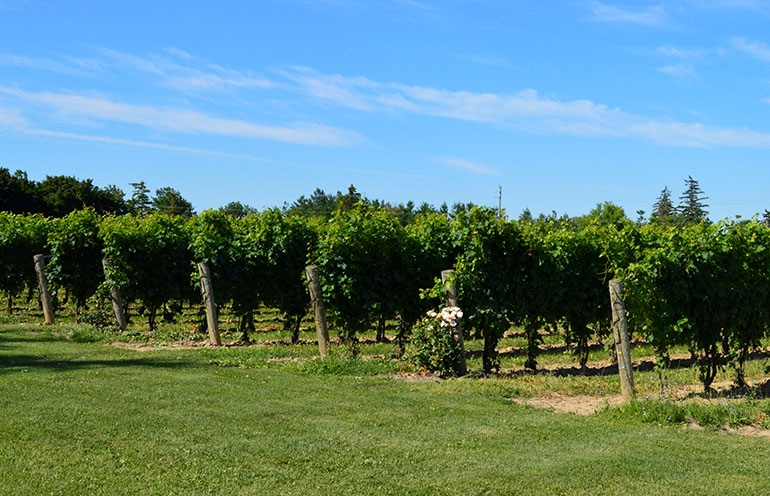
In an ideal world, we’d have virus-free vines and problem-free vineyards. Unfortunately, we don’t live in an ideal world, so two different parts of the country — both of them growing grapes — are learning from each other how to solve overlapping problems.
In California, Foundation Plant Services (FPS) at University of California (UC), Davis, was founded in 1958 to distribute virus-tested propagation stock. Severe virus disease problems during the ‘50s spurred UC and USDA scientists to develop methods for grape virus disease detection and eradication. A large collection of disease-tested wine, table, raisin, and rootstock grape selections was created as the foundation of the California Grapevine Registration & Certification program.
A 100-acre Foundation vineyard was established on fumigated soil in an isolated location where vines are inspected and retested regularly as the source of California Registered or Certified grapevines — the only dedicated grape importation facility in the U.S.
FPS research programs are developing new techniques for disease detection and elimination to improve the quality of propagation materials. And as an indicator of its success, FPS has expanded into programs involving not only grape stock, but fruit and nut trees, sweet potatoes, roses, and strawberry plants.
According to one UC, Davis report focused on grapevine leafroll, providing disease-free grapevines and rootstock to California’s famed North Coast wine region is a multimillion-dollar money-saver.
The Center for Wine Economics at the Robert Mondavi Institute for Wine and Food Science noted, “It’s money-wise to the tune of more than $60 million annually by placing a dollar value on the efforts to prevent the spread of just one disease in a single growing region while the overall benefits of such testing and certification are dramatically higher.”
The study’s leading author reported, “Even if growers have to pay a premium for certified virus-free vines, the study suggests they receive a large benefit of between six and ten times the cost,” while a study co-author published, “The most economically beneficial strategy is to plant initially with certified clean vines and replace any that become diseased with certified clean vines.”
Benefit for growers
Researchers in that study found the average annual benefit to a grower from replacing diseased vines was 55 cents per vine or $727 per acre if certified materials were used to both plant and replant the vineyard.
In Canada, grapes are becoming an increasingly more prominent economic sector as the wine industry already employs over 5,500 people and generates revenues in excess of $1.2 billion.
Jill Page is project manager of the Canadian Grapevine Certification Network (CGCN-RCCV) overseeing two programs aimed at the long-term growth of the grape and wine industry.
As part of the clean plant network, $2.3 million has been allocated to create a network of certified, virus-free grapevines that growers can plant to ensure long-term viability of Canadian grape and wine sectors.
And that’s in addition to a previous $8.4 million investment involving 23 separate activities ranging from soilborne pathogens to tannin content and from canopy management to berry ripening as well as analyzing the factors affecting grapevine winter hardiness (this is, after all, Canada).
“Our Grape and Wine Custer is years behind California as we just launched our verification program this year and are still in the rollout stage, but our bottom line program concepts are the same — if you start healthy, you stay healthy — if you start clean, there’s a better chance you’ll stay clean,” Page admits.
And giving credit where it’s due, she says that rather than repeating some of the successful work of others, CGCN-RCCV is modeling after the national clean plant program and lessons learned in California.
“We’re not looking to recreate the wheel because the FPS 2010 protocol already provides a program free from viruses and other pathogens in grapevine stocks produced through propagation and we’ve been working off of that.”
For more news on pests, disease management and other issues affecting vineyards, subscribe to the bi-monthly newsletter The Grape Line.
About the Author(s)
You May Also Like




